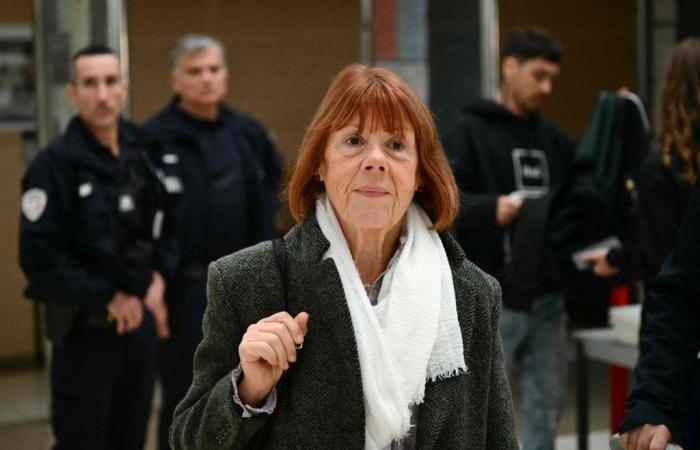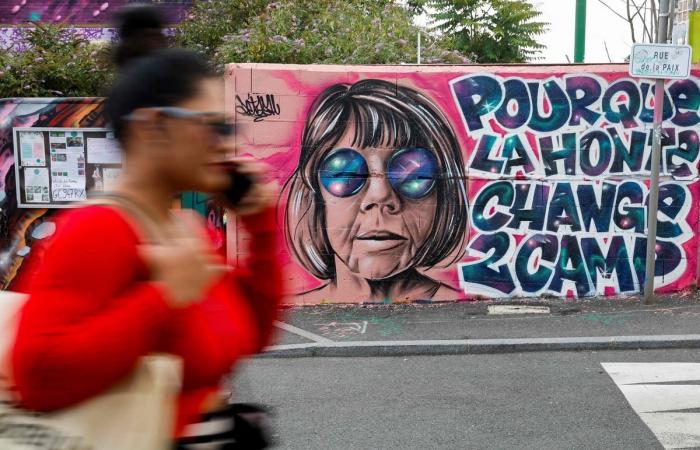You would have to live on the Moon not to have heard about the Mazan rape affair. The astonishing story of Dominique Pelicot, father of a family, grandfather, who for ten years drugged his wife Gisèle without her knowledge to offer her body to strangers contacted via the Internet. The husband, as well as 50 co-defendants, have been on trial before the Vaucluse criminal court since September 2. A long, sprawling trial, the scale of which can be measured in a few figures: the hearings span four months, involve around forty lawyers, include five civil parties, and are followed by 36 accredited media, from “La Provence » to the Brazilian press. One last figure: the procedure represents 31 volumes…
But the scope of the case goes well beyond the figures of this legal marathon. This trial is historic in its symbolism: seven years after #MeToo, the accused are still stumbling over the notions of consent, rape, marital rape, male/female relationships, sexuality. A whole system is being summoned to the hearing.
Seven years after #MeToo, the accused are still stumbling over the notions of consent
You would have to live on the Moon, too, not to have followed all or part of the debates through the media and social networks. Via images on a screen, or words written on paper. Subject-verb-complement. But living it is something else again. Many people take this step, between the story and the feeling. Many women, of all ages, each with their own story and reason for being there, from 7 a.m., in front of the Avignon court, queuing to hope for a place in the trial broadcast room, just next to the Voltaire room where the debates are held.
Gisèle Pelicot stands behind her two Parisian lawyers, in front of the civil parties.
BENOIT PEYRUCQ / AFP
You have to arrive early because places are limited. “Turn off your cell phones, if you need to go to the toilet it is now, everyone who leaves the room will lose their place,” we warn. Military.
“We are all Gisèle”
Here, you just have to follow the audience on a rectangular screen. The angle of view does not extend beyond the court: neither the civil parties nor the two defendants’ boxes are in the frame. But there is no need to see the victim’s eyes to grasp the horror, to imagine their inner turmoil. And then, Gisèle, everyone waits for her, each time she enters and leaves the audience. They watch this woman walk, so small, so frail and so strong, dignified and elegant, sunny, draped in a camel felt cape. At each entrance and exit, a guard of honor, applause, tears around her. “We are all Gisèle,” say Laurène and Lucile, two 29-year-old sisters who came from Nevers to “give her strength.”
There is no need to see the victim’s eyes to grasp the horror, to imagine their inner turmoil.
Gisèle Pelicot does not hesitate to come and meet these women, to hold a hand, dry a tear, share, eye to eye. In these furtive minutes, a silent energy of rare intensity is woven. From woman to woman.
Heavy ambiance
The atmosphere is quite different, in the courtroom itself, reserved for lawyers, witnesses, stakeholders, journalists and press cartoonists. A heavy, heavy, serious atmosphere.
On the left, the defendants’ boxes. Exactly opposite, the civil parties, with, behind the protective hedge of her two Parisian lawyers, Gisèle Pelicot. In the center, the courtyard, and on either side, three screens, to broadcast the video exchanges with certain experts, and the films of the sexual relations that Dominique Pelicot kept on his computer in a file called “Abuse”. With each broadcast, the room holds its breath. The civil party insisted on lifting the closed session, “so that the shame changes sides”, finally.
“Images that attack human dignity”
This is not done without precaution. At each request for viewing, all parties are consulted, give their opinion, the President of the Court, Roger Arata, decides, not without reminding that he only accedes “if the images are necessary” for the manifestation of the truth “. In fact, faced with the denials of certain accused and the challenges to the definition of rape, there is often a necessity. “I would like to point out that these images are an attack on human dignity,” he warns, inviting “fragile people and minors” to leave the room.
GEOFFROY VAN DER HASSELT / AFP
At the trial, the civil party insisted on lifting the closed session, “so that the shame changes sides”.
In these moments, which explode on the screen, Dominique Pelicot covers his ears, looks at his feet. Gisèle, for her part, sets her eyes far ahead, into space, or on her lawyers. His face remains impassive. Just above, the film is difficult to sustain. Some journalists look away. The silence is total. Mixed in are discomfort, nausea, stomach ache, woman’s pain…







